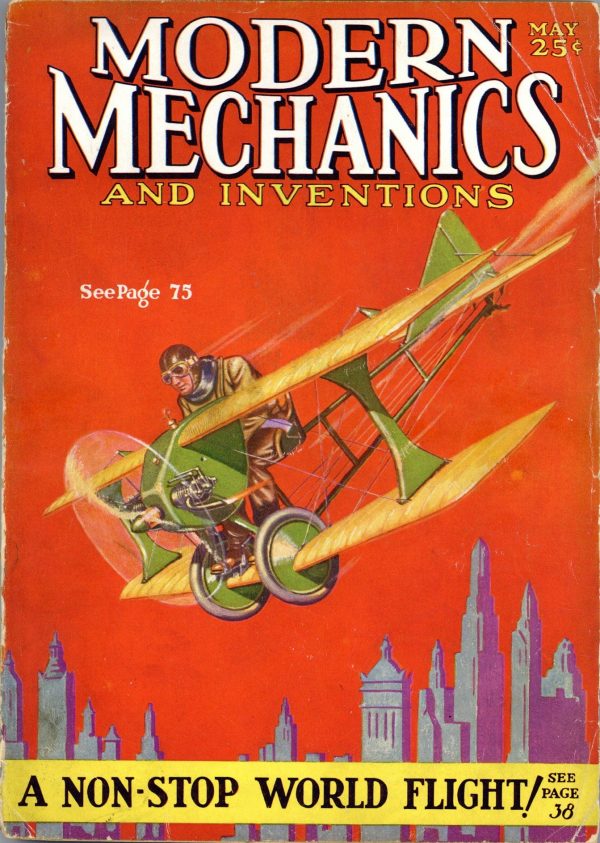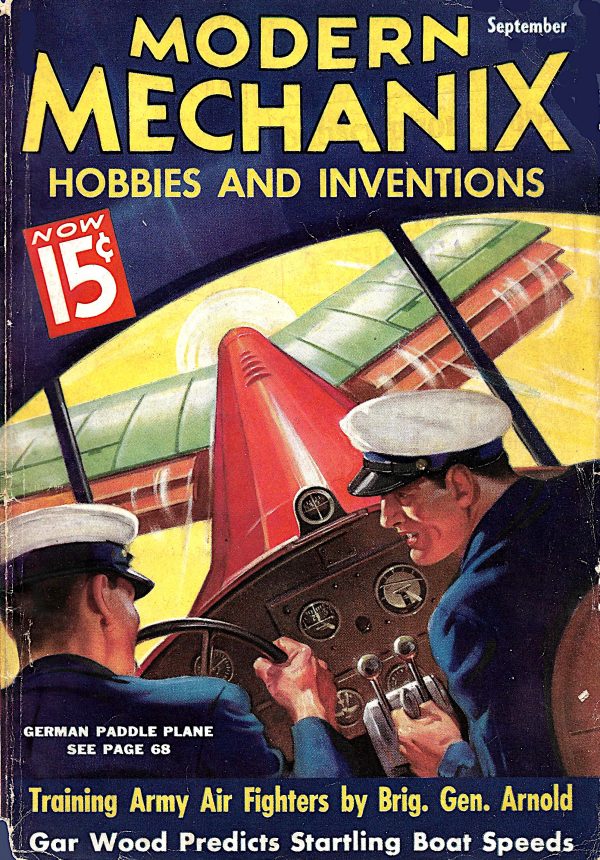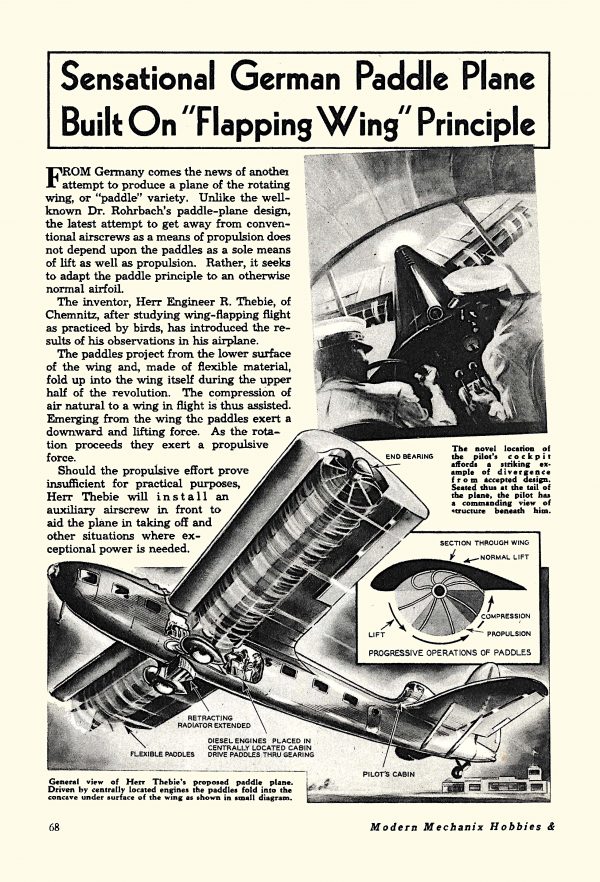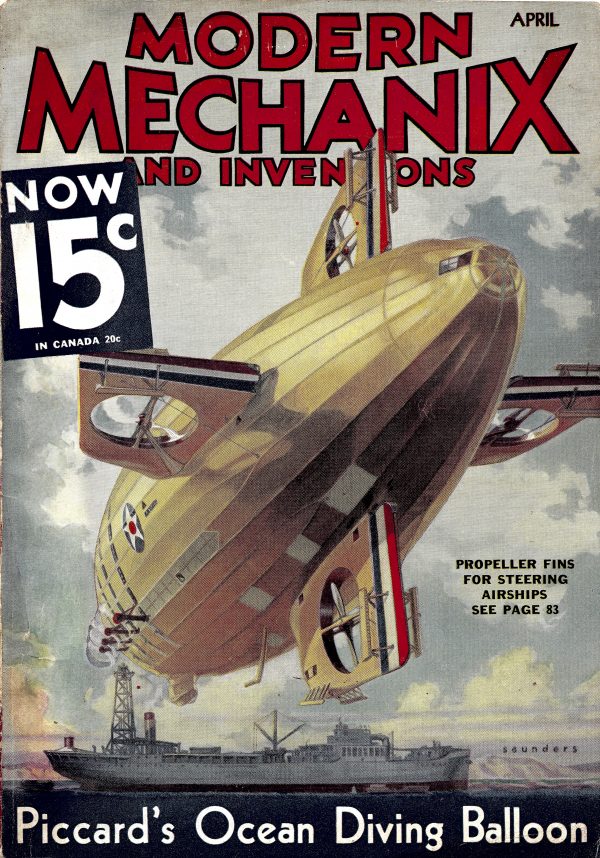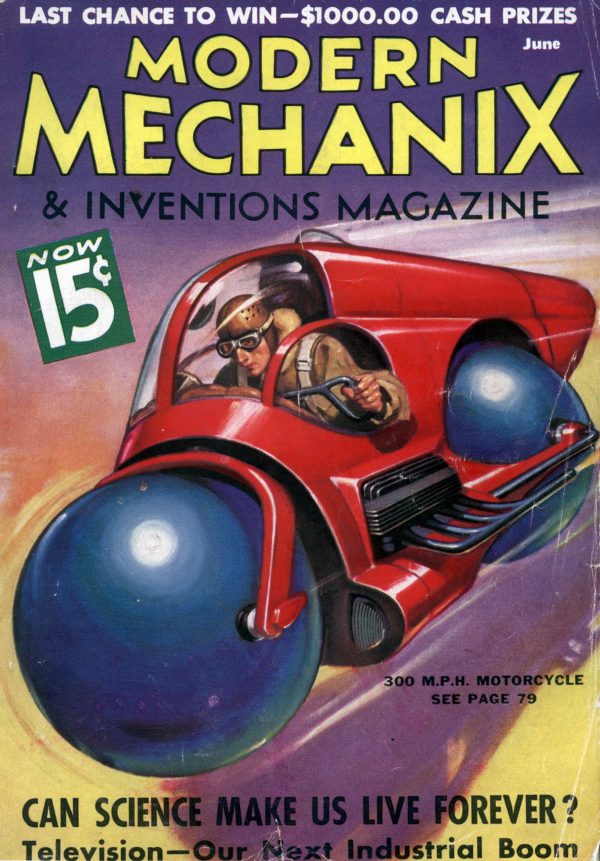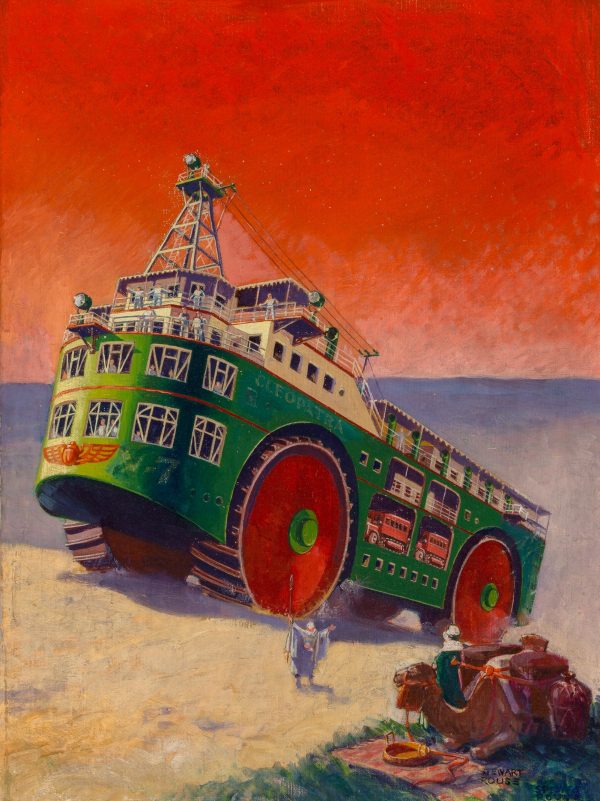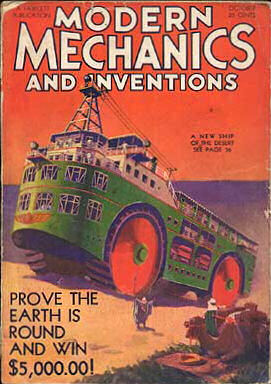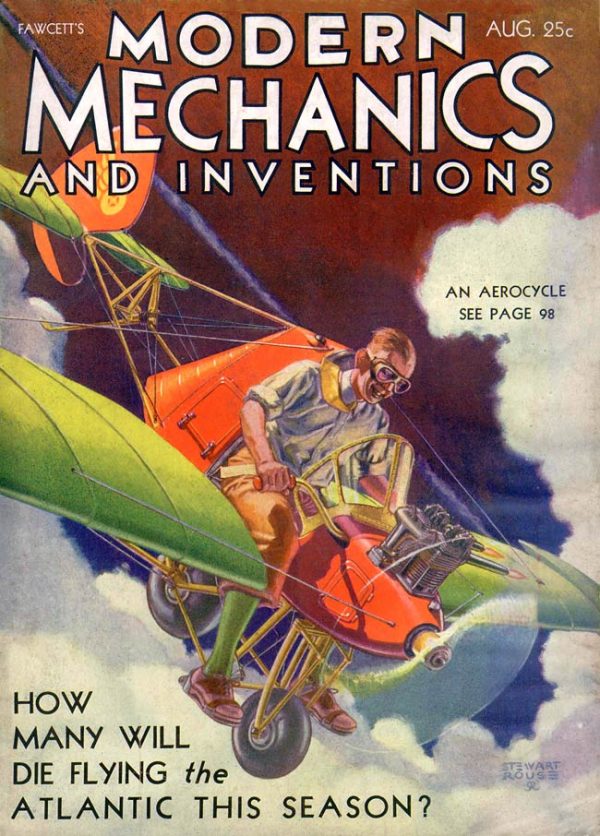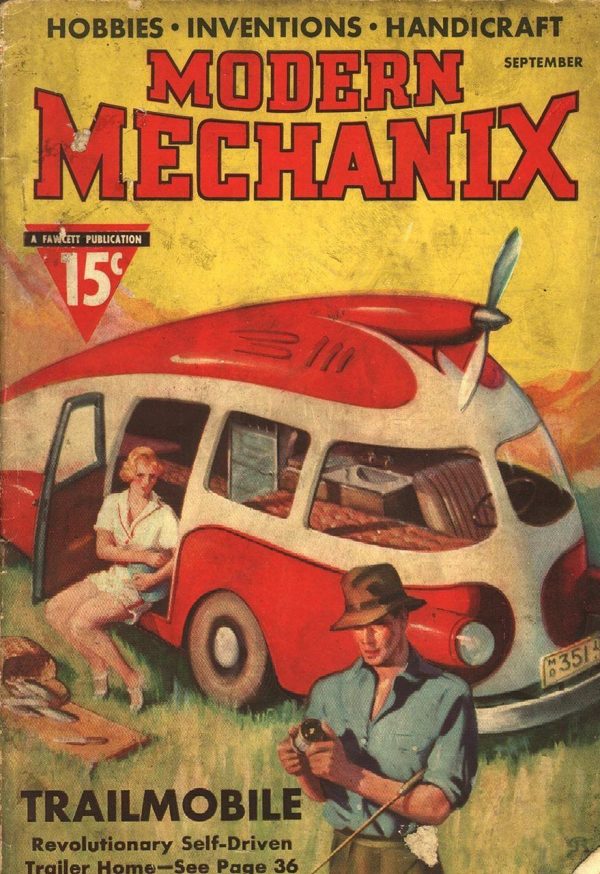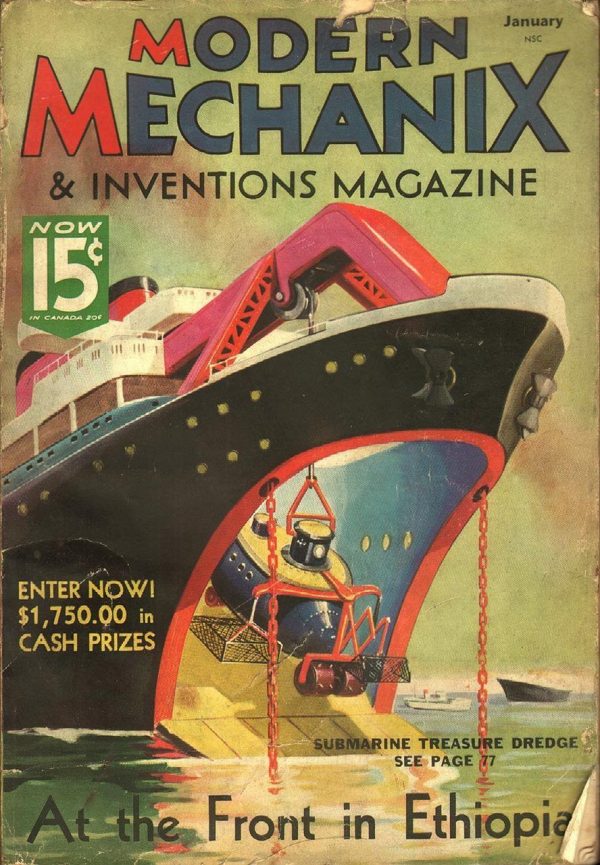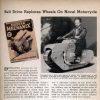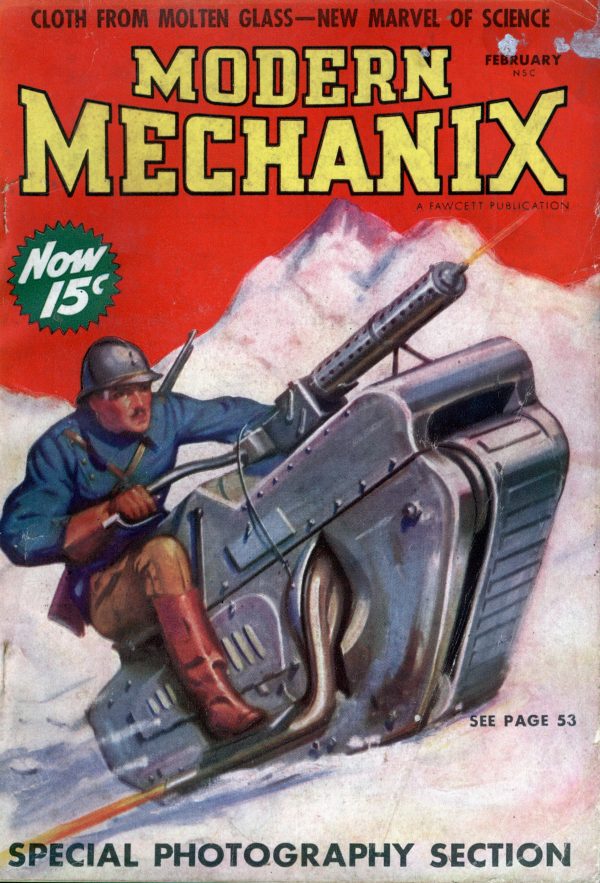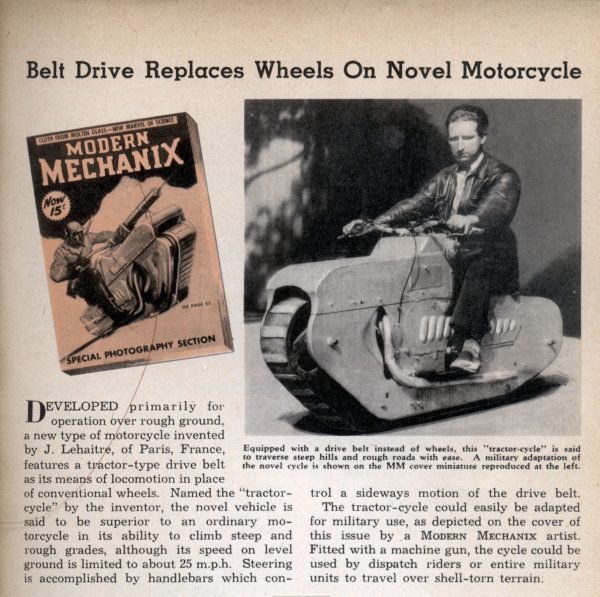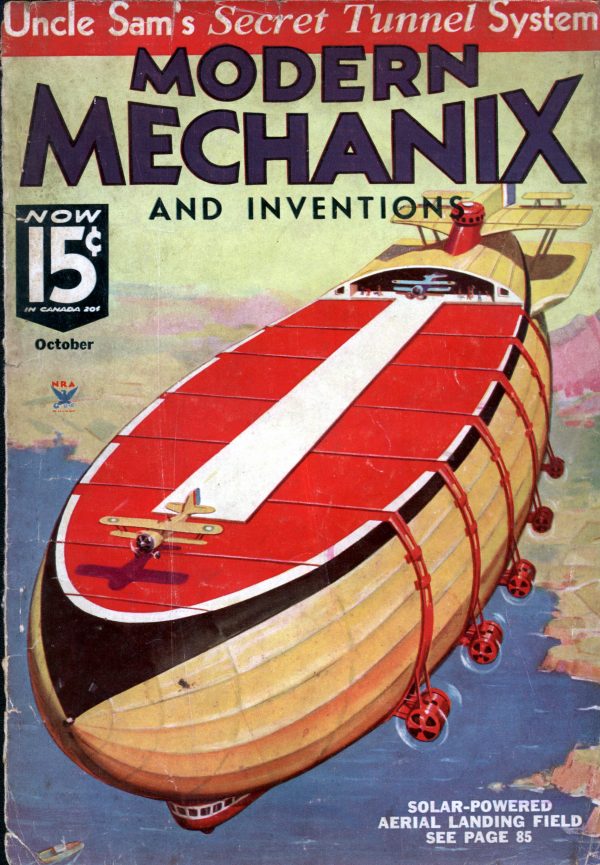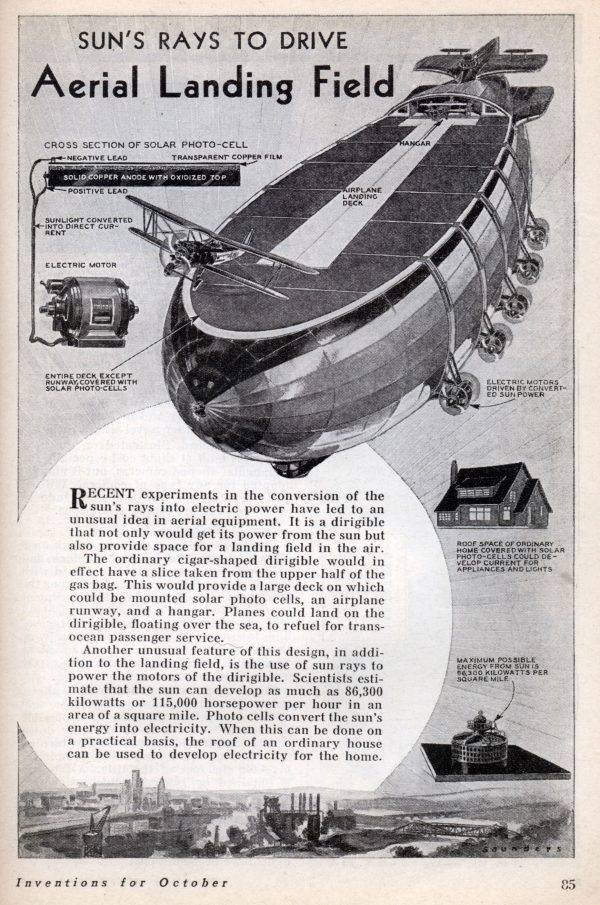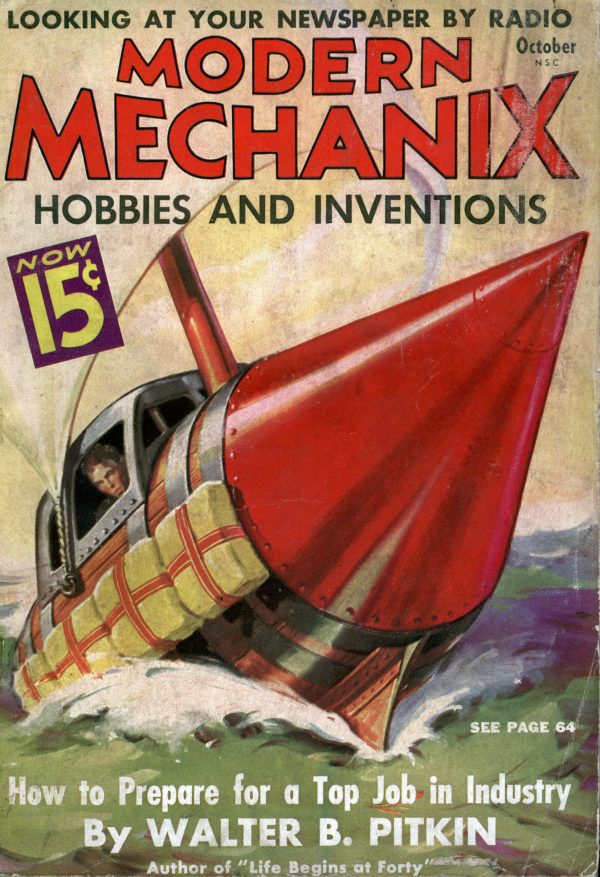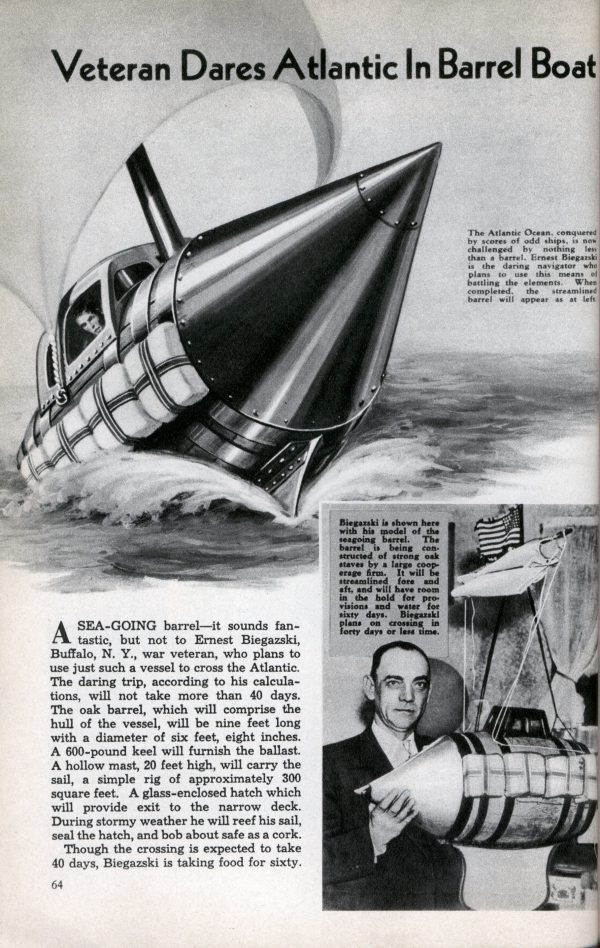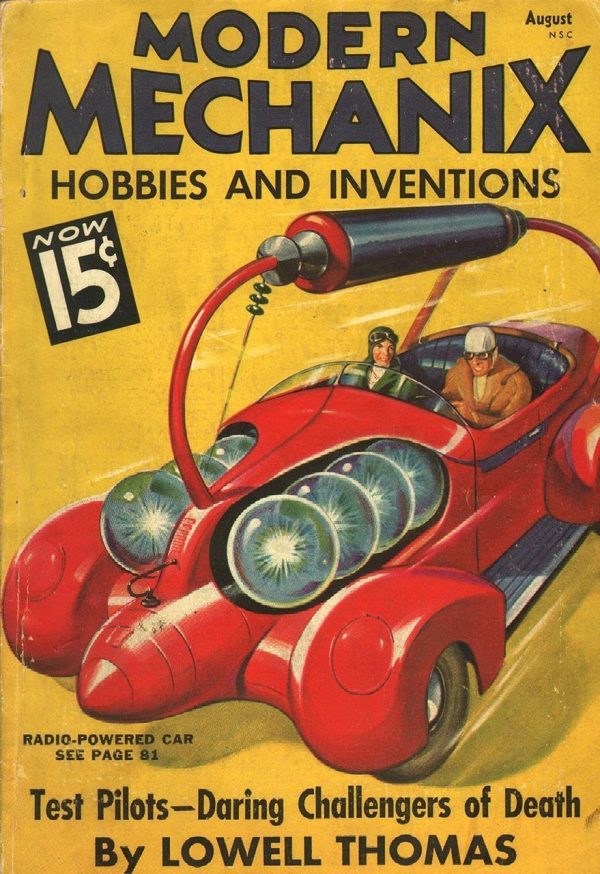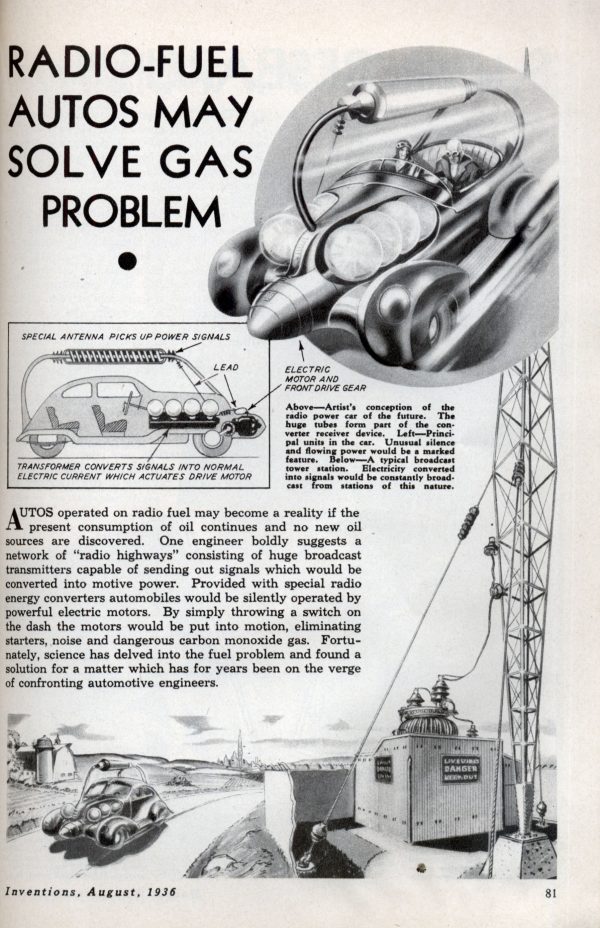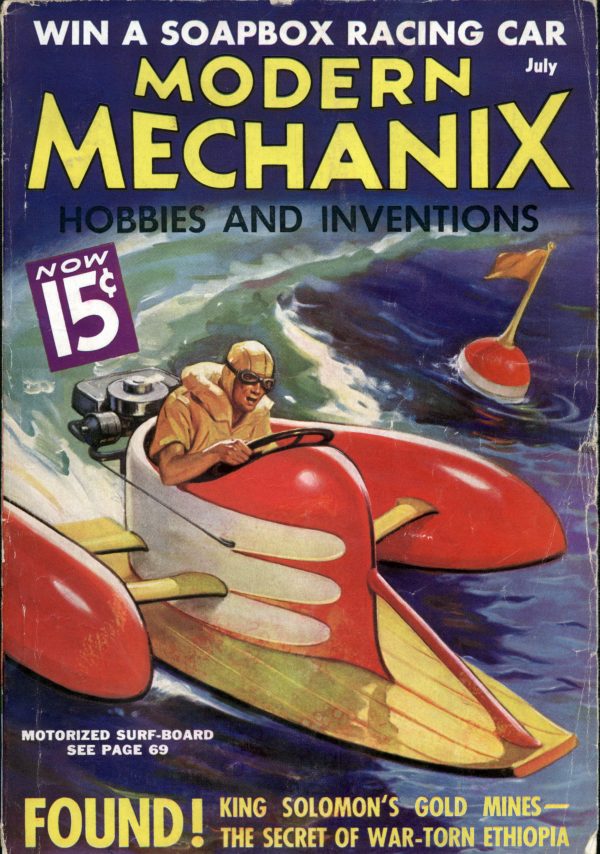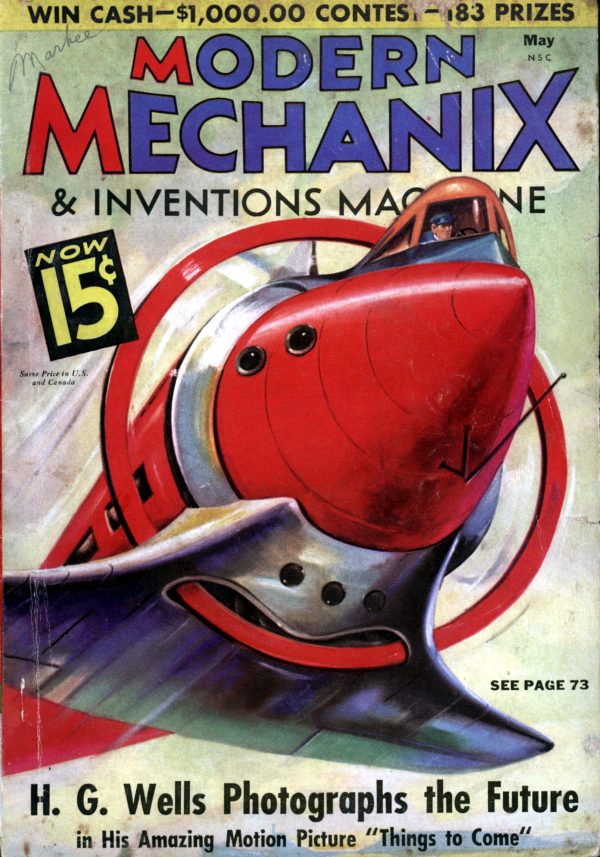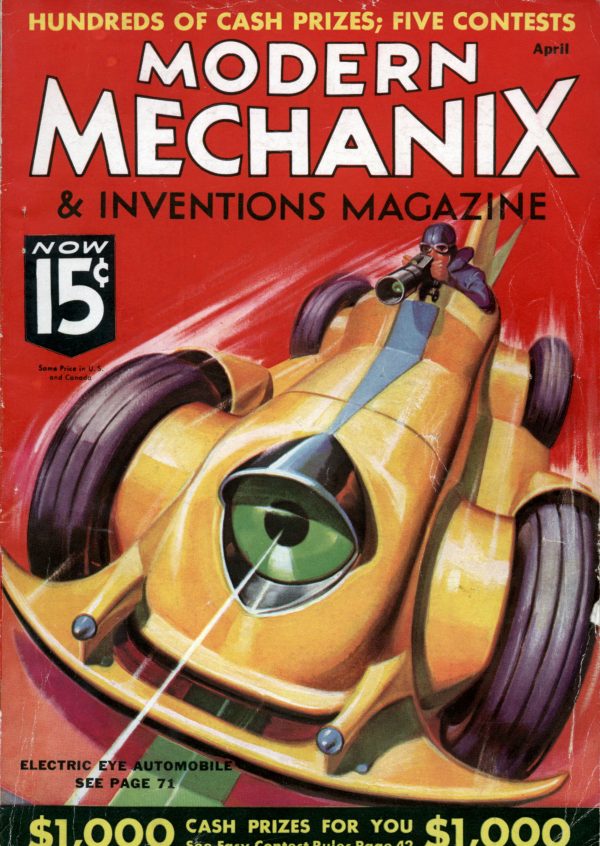Tag: Modern Mechanix
German Paddle Plane
This entire issue can be downloaded here
Piccard’s Ocean Diving Balloon
300 M.P.H. Motorcycle
MOUNTED on spherical airwheels of moderate pressure, a recently designed super-motorcycle powered with twin motors is expected to shatter all existing speed marks for land vehicles. Speeds of more than 300 miles per hour will be reached without difficulty, its designer believes.
The peculiar wheels, apart from providing greater traction and serving as shock-absorbers, are expected to add to the streamline possibilities and the stability of the machine.
This entire issue can be downloaded here
A New Ship of the Desert
How Many Will Die Flying The Atlantic This Season?
Trailmobile
Submarine Treasure Dredge
Belt Drive Replaces Wheels On Novel Motorcycle
DEVELOPED primarily for operation over rough ground, a new type of motorcycle invented by J. Lehaitre, of Paris, France, features a tractor-type drive belt as its means of locomotion in place of conventional wheels. Named the “tractor-cycle” by the inventor, the novel vehicle is said to be superior to an ordinary motorcycle in its ability to climb steep and rough grades, although its speed on level ground is limited to about 25 m.p.h. Steering is accomplished by handlebars which control a sideways motion of the drive belt.
The tractor-cycle could easily be adapted for military use, as depicted on the cover of this issue by a Modern Mechanix artist. Fitted with a machine gun, the cycle could be used by dispatch riders or entire military units to travel over shell-torn terrain.
Solar-Powered Aerial Landing Field
Recent experiments in the conversion of the sun’s rays into electric power have led to an unusual idea in aerial equipment. It is a dirigible that not only would get its power from the sun but also provide space for a landing field in the air.
The ordinary cigar-shaped dirigible would in effect have a slice taken from the upper half of the gas bag. This would provide a large deck on which could be mounted solar photo cells, an airplane runway, and a hangar. Planes could land on the dirigible, floating over the sea, to refuel for trans-ocean passenger service.
Another unusual feature of this design, in addition to the landing field, is the use of sun rays to power the motors of the dirigible. Scientists estimate that the sun can develop as much as 86,300 kilowatts or 115,000 horsepower per hour in an area of a square mile. Photo cells convert the sun’s energy into electricity. When this can be done on a practical basis, the roof of an ordinary house can be used to develop electricity for the home.
Veteran Dares Atlantic In Barrel Boat
Radio-Powered Car
AUTOS operated on radio fuel may become a reality if the present consumption of oil continues and no new oil sources are discovered. One engineer boldly suggests a network of “radio highways” consisting of huge broadcast transmitters capable of sending out signals which would be converted into motive power. Provided with special radio energy converters automobiles would be silently operated by powerful electric motors. By simply throwing a switch on the dash the motors would be put into motion, eliminating starters, noise and dangerous carbon monoxide gas. Fortunately, science has delved into the fuel problem and found a solution for a matter which has for years been on the verge of confronting automotive engineers.
Motorized Surf-Board
Super-Speed Turbo-Plane to Span Ocean
To bring New York within five hours of London would mean a facility almost beyond our imagination. Other complications, such as the continual threat in times of war to countries erstwhile virtually isolated, would attain fantastic proportions.
